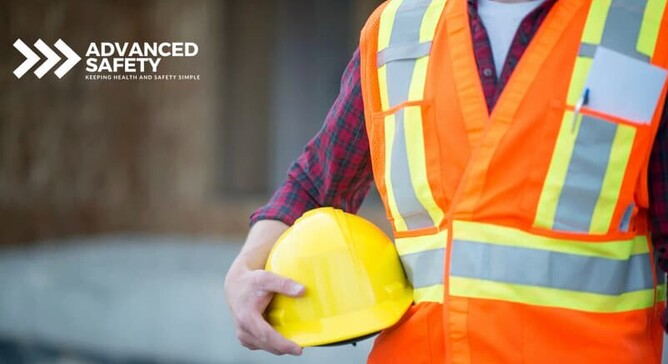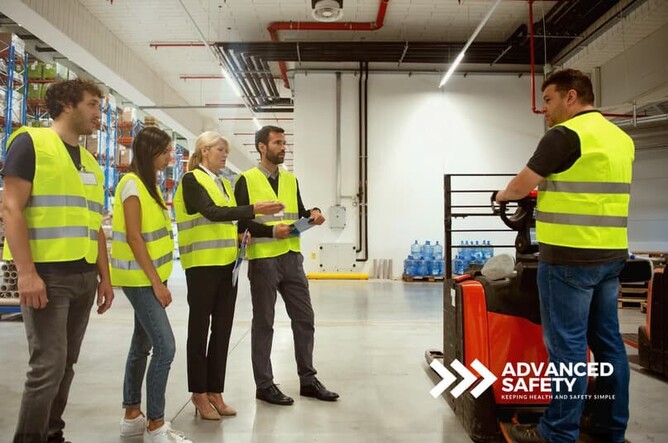Why is health and safety is important in the workplace? It is to protect people, boost culture, and ensures compliance under New Zealand’s Health and Safety at Work Act 2015.
Businesses that get it right save lives, strengthen culture, and outperform competitors.
Understanding Why Health and Safety Is Important in the Workplace
Health and safety in the workplace is about far more than ticking compliance boxes – it’s about creating an environment where people can work confidently, efficiently, and without unnecessary risk.
At its core, workplace health and safety is the discipline of identifying hazards, assessing risks, and applying controls to protect everyone who interacts with the business – staff, contractors, and the public.
When businesses make health and safety a priority, the benefits extend well beyond accident prevention. You’ll see stronger engagement, fewer disruptions, and a workforce that knows their employer genuinely values them.
What Does Health and Safety Cover?
Workplace health and safety includes a range of considerations, including:
Physical Hazards – Preventing slips, trips, and falls through hazard identification and mitigation.
Chemical and Biological Risks – Managing exposure to hazardous substances and ensuring proper handling procedures.
Psychosocial Well-being – Addressing workplace stress, bullying, and mental health challenges.
Ergonomic Concerns – Designing workstations and practices that reduce strain and repetitive injuries.
By addressing these areas, businesses create safer work environments that lead to higher productivity, reduced absenteeism, and improved employee morale.
Why Is Health and Safety Important in the Workplace for Legal Compliance?
In New Zealand, the Health and Safety at Work Act 2015 (HSWA) sets a clear expectation: every Person Conducting a Business or Undertaking (PCBU) must do what is “reasonably practicable” to ensure the health and safety of workers.
Failing to meet these duties can lead to:
Serious financial penalties
Criminal liability for officers and directors
Permanent damage to reputation
But when you lead with compliance and culture together, you create long-term value. Compliance becomes a baseline – culture drives performance.
Key Legal Frameworks
Health and Safety at Work Act (HSWA) 2015 – Requires businesses to proactively manage risks, train employees, and provide safe work environments.
WorkSafe NZ – New Zealand’s regulatory body that enforces workplace safety standards and offers compliance guidance.
Industry-Specific Regulations – Construction, manufacturing, and healthcare sectors must meet additional safety requirements tailored to their risks.
Employer and Employee Responsibilities
Both employers and employees play a role in maintaining workplace safety:
Employers Must: Identify hazards, conduct risk assessments, implement control measures, and provide necessary training and protective equipment.
Employees Must: Follow safety protocols, report hazards, and use protective equipment correctly.
Failure to comply with legal requirements can result in significant fines, reputational damage, and legal action, making compliance an essential part of business operations.
Want to Improve Your Workplace Safety?
Contact Advanced Safety for expert guidance and support.
Contact Us TodayThe Human Reason: Why Health and Safety Is Important in the Workplace
Behind every statistic is a person. Every lost-time injury represents someone’s parent, partner, or friend.
When leadership genuinely commits to keeping people safe, it sends a message of respect and trust. This commitment fuels:
Greater staff loyalty
Lower turnover
Stronger teamwork and morale
At Advanced Safety, we’ve seen time and again that safe businesses aren’t just compliant – they’re more productive, creative, and resilient.
The Business Case: Why Health and Safety Is Important in the Workplace for Performance
Treating health and safety as a cost centre is a mistake. In reality, it’s one of the most profitable investments a business can make.
Here’s why:
Business Benefit | Result |
|---|---|
Fewer incidents | Reduced downtime and disruption |
Better engagement | Higher productivity and quality output |
Lower costs | Fewer claims, reduced ACC levies |
Enhanced brand trust | More tenders won and partnerships secured |
Compliance certainty | Peace of mind for directors and officers |
A robust safety system means operations run smoother, staff turnover drops, and clients view your business as a reliable, low-risk partner.
Why Health and Safety Is Important in the Workplace for Team Culture
A strong safety culture isn’t built overnight – it’s developed through open communication and accountability.
Encouraging staff to speak up, report hazards, and contribute ideas fosters ownership and pride.
Workplaces that invest in culture see tangible results:
Higher engagement and motivation
Fewer near misses and accidents
Improved mental wellbeing and morale
When people feel valued and heard, they protect not only themselves but each other – creating a self-sustaining culture of safety.
Want to discuss your safety goals?
Contact Advanced Safety for professional guidance and support.
Contact Us TodayWhy Health and Safety Is Important in the Workplace for Business Growth
Health and safety excellence directly supports business growth.
Companies with robust safety systems are more competitive in procurement, more trusted by clients, and more resilient in downturns.
In New Zealand’s tight labour market, demonstrating care for worker wellbeing also attracts and retains talent. A safe, positive work environment is a powerful recruitment tool.
Practical Steps: How to Strengthen Health and Safety in the Workplace
Assess your current state. Use a structured tool like the Compliance Compass to identify gaps.
Engage your workforce. Make safety a shared responsibility.
Align documentation with practice. Ensure written procedures reflect what actually happens on site.
Monitor and review regularly. Continuous improvement keeps systems effective.
Train leaders and staff. Knowledge builds confidence and consistency.
Consistent action builds credibility – and credibility builds results.
The ROI: Why Health and Safety Is Important in the Workplace for Long-Term Success
Research shows that businesses investing in effective safety management see up to 40% fewer incidents and 20% higher productivity.
These aren’t abstract figures – they represent fewer disruptions, happier teams, and higher profits.
A proactive approach turns compliance into a competitive edge. You don’t just meet the law; you exceed it, and your clients notice.
Take the Next Step: Measure Where You Stand
Improvement starts with insight.
The Compliance Compass Assessment benchmarks your current health and safety performance, revealing strengths and opportunities across four key pillars:
Documentation and systems (aligned with ISO 45001)
Culture and engagement
Work practices and reality alignment
Emergency response planning
Learn more...
👉 Book your Compliance Compass Assessment today and take control of your health and safety roadmap.
FAQs About Why Health and Safety Is Important in the Workplace?
What is workplace health and safety?
It’s the process of identifying hazards, assessing risks, and managing them to protect everyone in the workplace.
Why is health and safety important in the workplace for NZ businesses?
Because it’s required by the HSWA 2015 and critical to protect workers, maintain productivity, and build a strong business reputation.
Who is responsible for workplace health and safety?
Under New Zealand law, everyone – from company directors to workers – shares responsibility for keeping each other safe.
What are the main benefits of workplace health and safety?
Lower injury rates, reduced costs, improved morale, and greater business trust.
How can I improve workplace health and safety?
Start with a structured assessment, engage your people, and continuously review and improve your systems.



